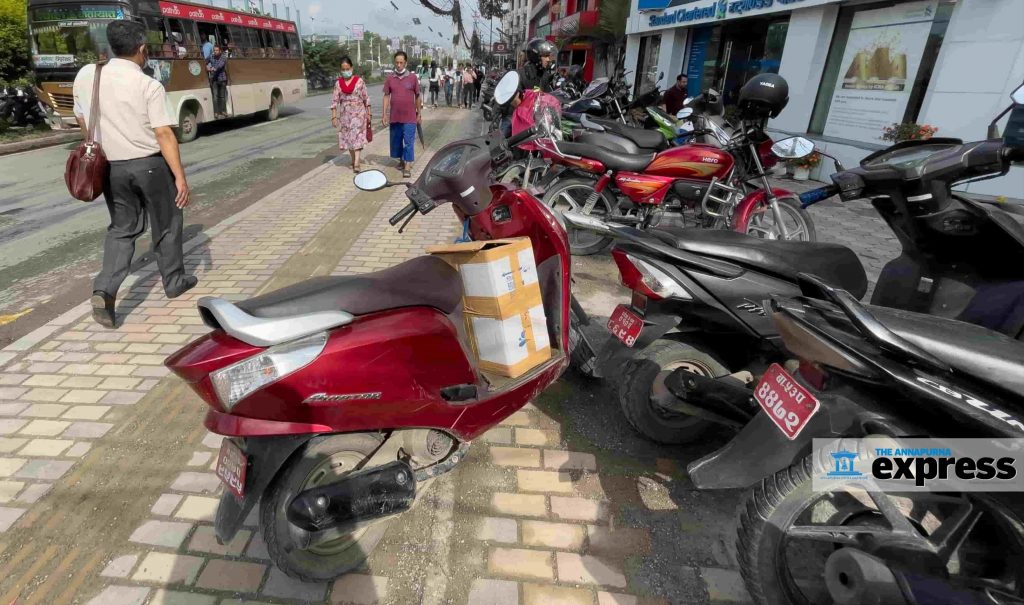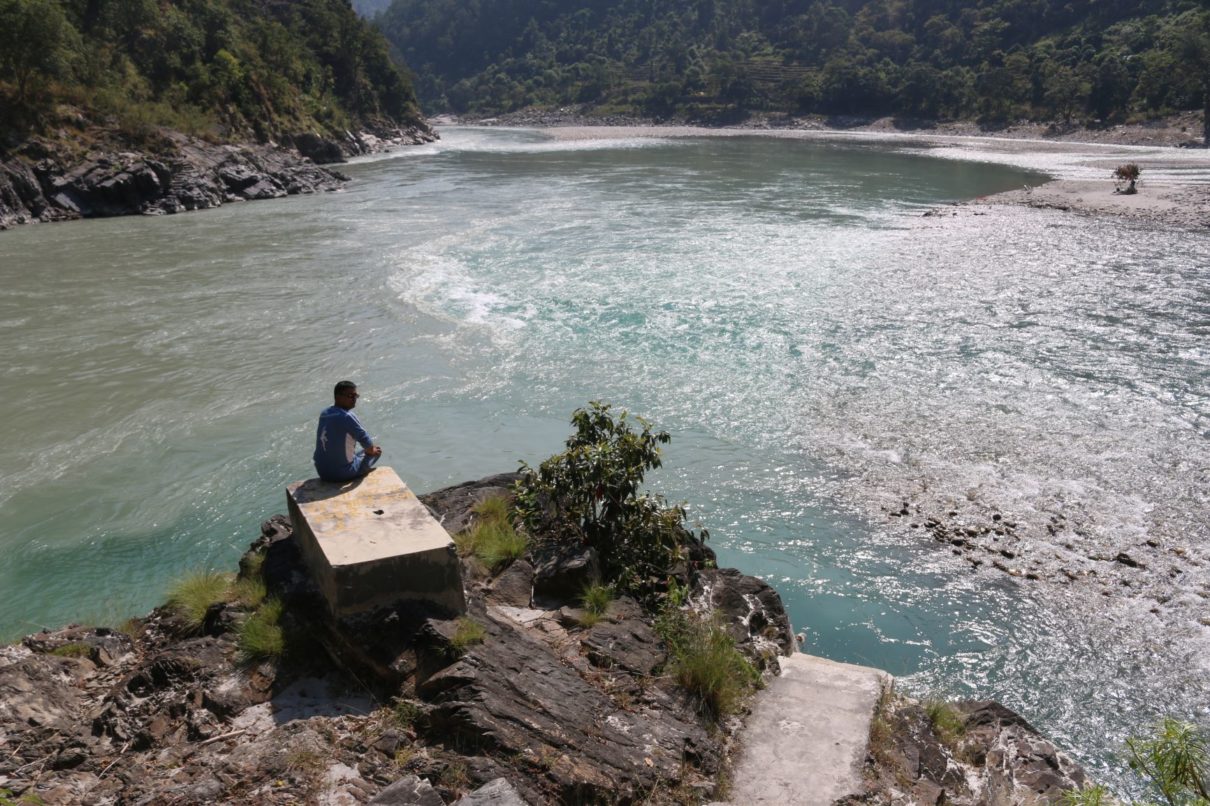Suman Meher Shrestha, urban planner, applauds mayor Balen Shah’s efforts to demolish illegal structures in Kathmandu. This, Shrestha believes, will ease Kathmandu’s parking problems by at least 30 to 40 percent as both private and government buildings have been using parking spaces for other purposes. The mayor’s actions, Shrestha says, will also reinstate the rule of law in Kathmandu. “It’s total anarchy right now because there is no monitoring and enforcement of laws. Shah is definitely going to change that and restore order,” he adds.
The building bylaws have various provisions to facilitate parking in the city. Every commercial building must have its own parking area. The government has given incentives like tax deductions to systemize parking. But most building owners are taking advantage of weak monitoring to maximize profits by renting out parking lots or constructing stores or ATM lounges in the space. The local authorities could fix this problem and that is one of the many things mayor Shah is trying to do at the moment.
Talking to ApEx, many Kathmandu residents complained of haphazard parking. Recounting incidents of parked cars obstructing traffic in inner roads, to handle-locked motorbikes in front of main gates, people were clearly frustrated with the lack of a system. A local of Sanepa recalled an incident where an ambulance couldn’t reach its destination as a car was parked in the one-lane street leading to the house. They had to carry the unconscious patient till the main road. Spokesperson Bhatta says people must be proactive and call the police and report such wrongdoings. This will, in the long run, make them conscious of their actions.
 Ganesh Karmacharya, project head, Department of Urban Development and Building Construction, on the other hand, says Kathmandu isn’t a planned city and that is the root of all our urban problems like narrow roads, lack of open spaces, congestion, etc. There is no option to constructing multistory parking lots in Kathmandu. We must use vertical space to mitigate parking problems in the city, he says. It’s not only the government’s responsibility either. Karmacharya says the private sector can and must be engaged in this.
“The government can direct the private sector to make use of this opportunity in a way that benefits them as well as the state,” he says. However, parking problems can’t be solved by focusing on parking solutions alone, say the experts ApEx spoke to. Our public transport system is in a complete mess. This has forced people to invest in their own bikes or cars the moment they have saved enough or are able to take a loan for it. Shrestha says if Kathmandu had an effective and reliable public transport system, people wouldn’t need to rely on private vehicles.
Arjun Koirala, senior urban planner, says other major cities in Nepal will also face problems that Kathmandu is going through right now if proper plans aren’t crafted and executed immediately. Core city areas are already congested and, with vehicle imports increasing every year, things will only get worse. “If we turn open areas into parking lots, we run the risk of losing essential breathing spaces. It’s a challenge to create more parking lots without ruining the city’s aesthetics and compromising on the greenery,” says Koirala.
The current situation is the result of poor planning and lack of foresight. Karmacharya says the government needs to take urgent action—maybe start by monitoring whether building bylaws are being properly followed. Then, it has to have elaborate discussions, at all levels, on how to manage parking in the city and come up with some concrete plans. “Our economy is also suffering because of the lack of parking spaces. People hesitate to go to many places in the city—like New Road, Bagbazaar, and Putalisadak, to name a few—as they don’t know where to park,” adds Koirala.
Limiting vehicular access to certain roads during certain hours could also help clear the roads. However, Koirala says this can affect people who reside in those areas so it’s best to weigh in the pros and cons before executing such plans. Another option would be using available, empty private plots as temporary parking spaces by collaborating with the owners. The KMC in its current demolition drive is taking stock of what parking places are already available.
These are, however, only a few possible options for immediate management of an escalating problem. For a sustainable and effective long-term solution, experts are of the unanimous view that the focus must be on changing our mode of transport. Koirala argues that as the city grows, vehicles will only increase. That will put more demand on the roads unless the government can provide mass transport. Shrestha adds that parking and congestion issues can’t be solved unless there is a solid public transport network in Kathmandu and people no longer have to rely on private vehicles as their primary commute option.
Ganesh Karmacharya, project head, Department of Urban Development and Building Construction, on the other hand, says Kathmandu isn’t a planned city and that is the root of all our urban problems like narrow roads, lack of open spaces, congestion, etc. There is no option to constructing multistory parking lots in Kathmandu. We must use vertical space to mitigate parking problems in the city, he says. It’s not only the government’s responsibility either. Karmacharya says the private sector can and must be engaged in this.
“The government can direct the private sector to make use of this opportunity in a way that benefits them as well as the state,” he says. However, parking problems can’t be solved by focusing on parking solutions alone, say the experts ApEx spoke to. Our public transport system is in a complete mess. This has forced people to invest in their own bikes or cars the moment they have saved enough or are able to take a loan for it. Shrestha says if Kathmandu had an effective and reliable public transport system, people wouldn’t need to rely on private vehicles.
Arjun Koirala, senior urban planner, says other major cities in Nepal will also face problems that Kathmandu is going through right now if proper plans aren’t crafted and executed immediately. Core city areas are already congested and, with vehicle imports increasing every year, things will only get worse. “If we turn open areas into parking lots, we run the risk of losing essential breathing spaces. It’s a challenge to create more parking lots without ruining the city’s aesthetics and compromising on the greenery,” says Koirala.
The current situation is the result of poor planning and lack of foresight. Karmacharya says the government needs to take urgent action—maybe start by monitoring whether building bylaws are being properly followed. Then, it has to have elaborate discussions, at all levels, on how to manage parking in the city and come up with some concrete plans. “Our economy is also suffering because of the lack of parking spaces. People hesitate to go to many places in the city—like New Road, Bagbazaar, and Putalisadak, to name a few—as they don’t know where to park,” adds Koirala.
Limiting vehicular access to certain roads during certain hours could also help clear the roads. However, Koirala says this can affect people who reside in those areas so it’s best to weigh in the pros and cons before executing such plans. Another option would be using available, empty private plots as temporary parking spaces by collaborating with the owners. The KMC in its current demolition drive is taking stock of what parking places are already available.
These are, however, only a few possible options for immediate management of an escalating problem. For a sustainable and effective long-term solution, experts are of the unanimous view that the focus must be on changing our mode of transport. Koirala argues that as the city grows, vehicles will only increase. That will put more demand on the roads unless the government can provide mass transport. Shrestha adds that parking and congestion issues can’t be solved unless there is a solid public transport network in Kathmandu and people no longer have to rely on private vehicles as their primary commute option.











